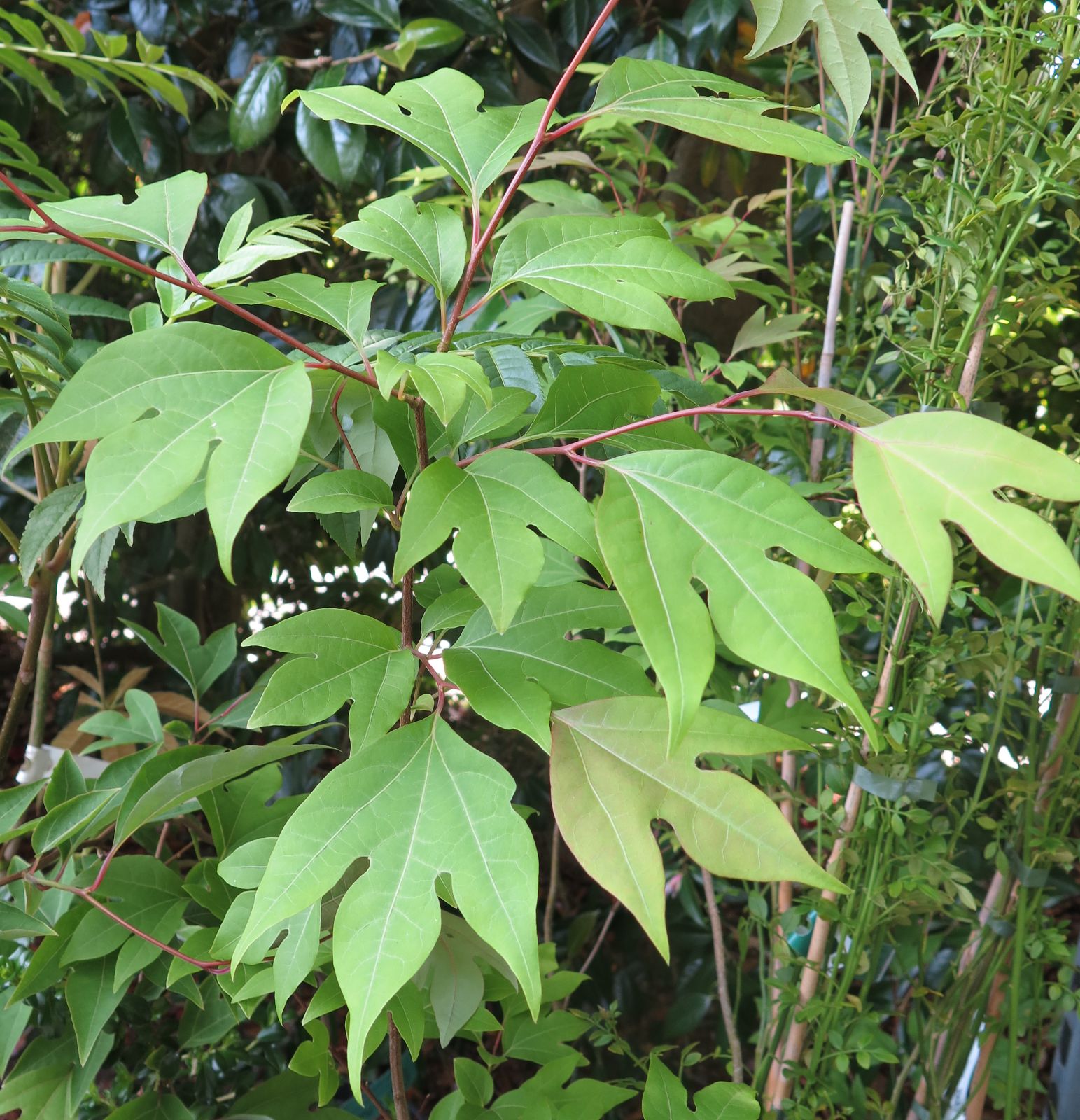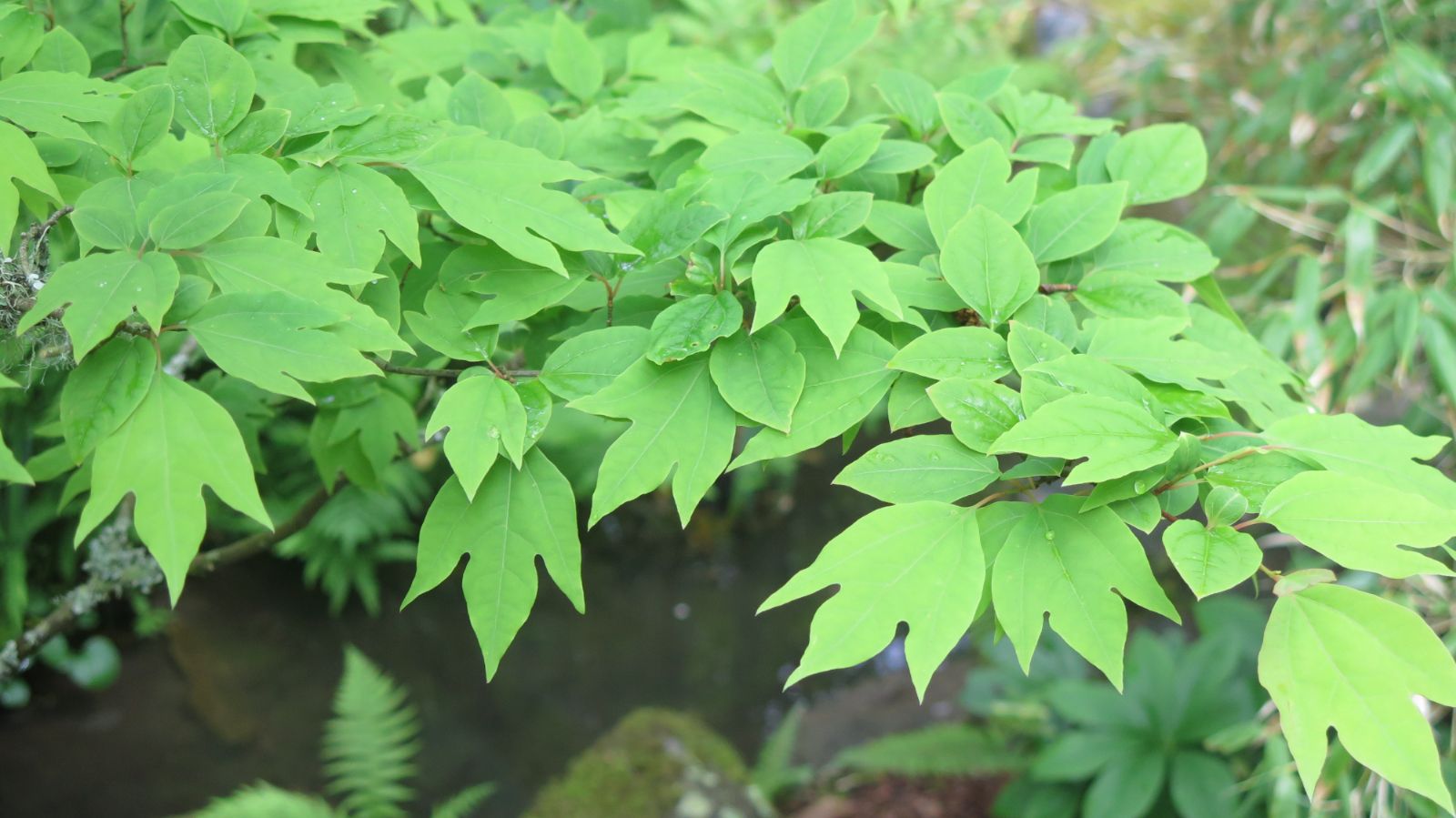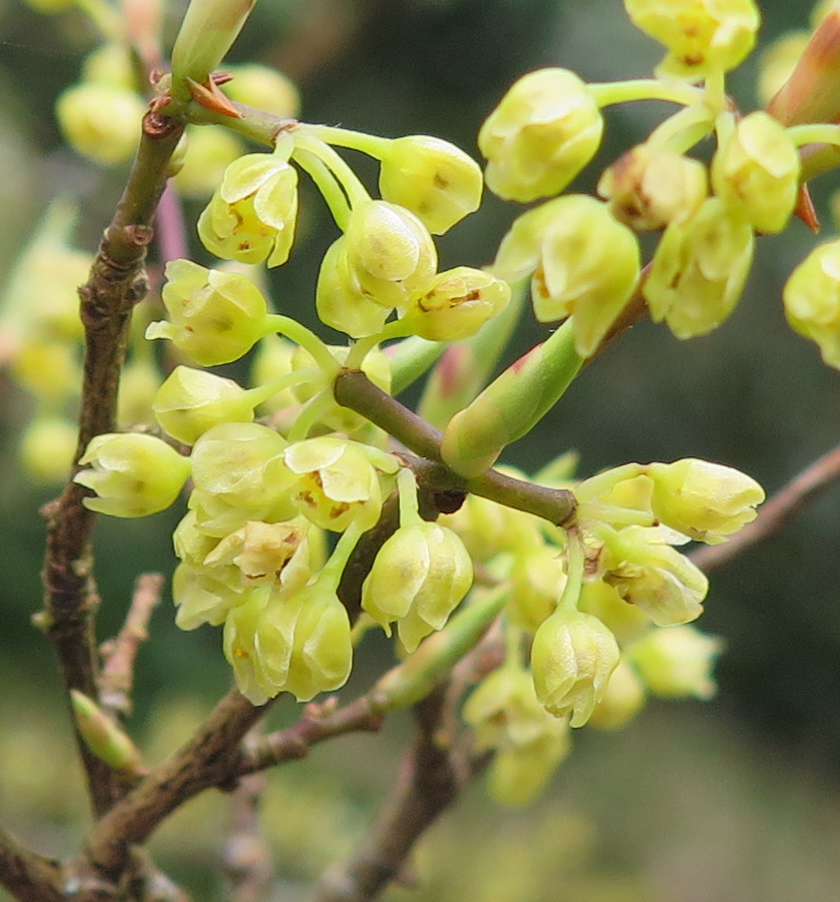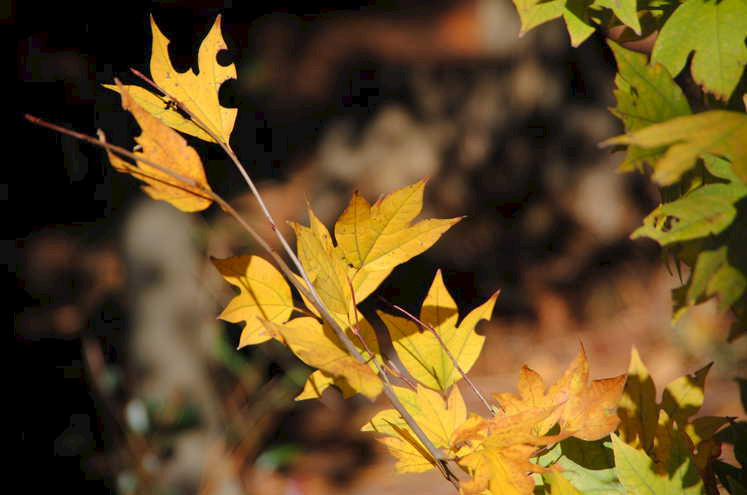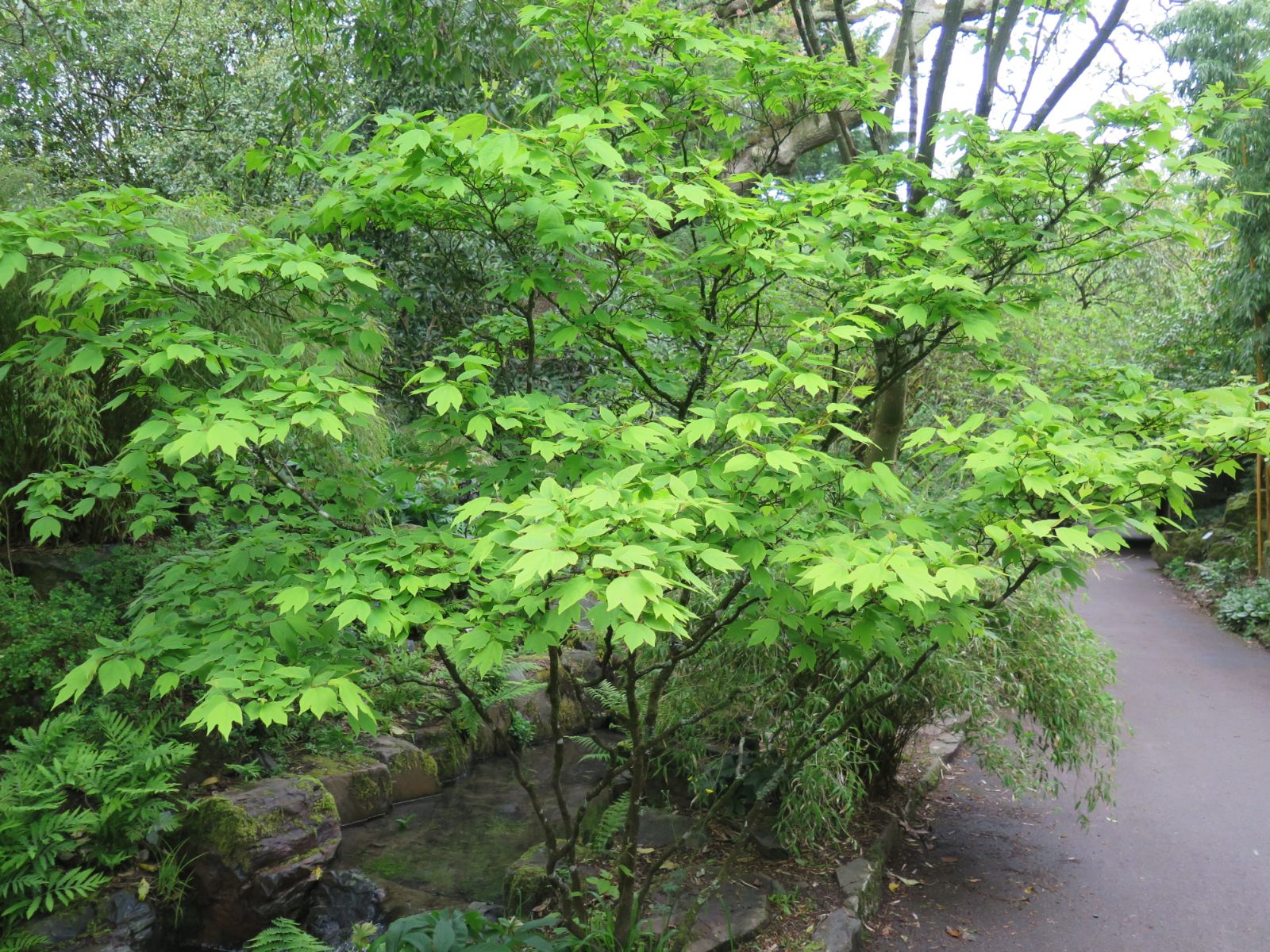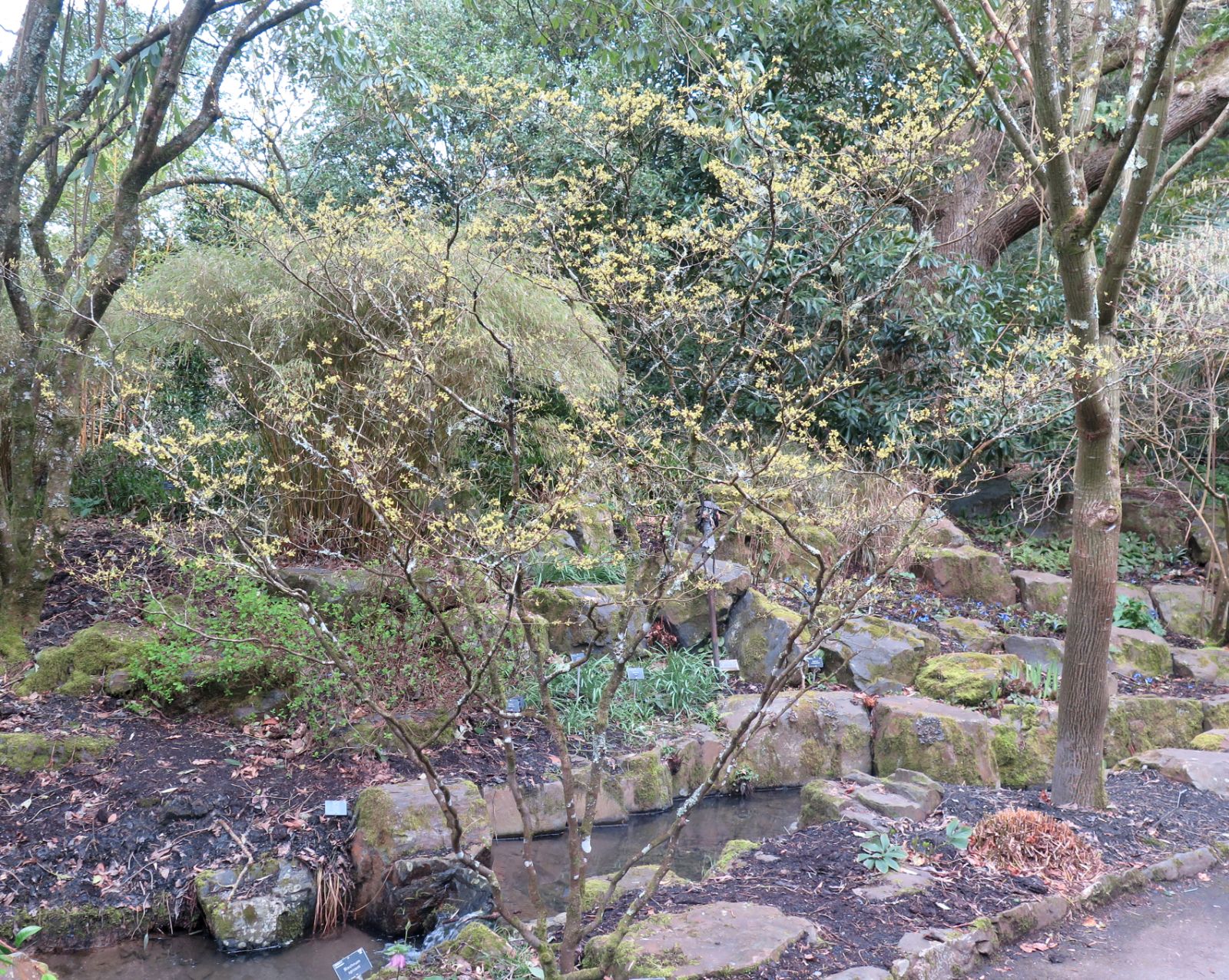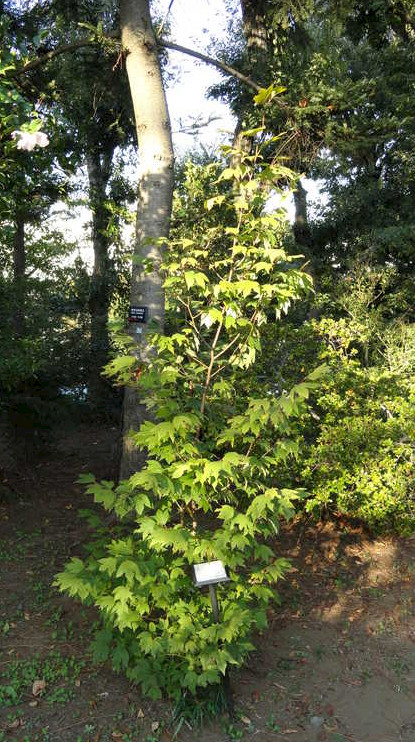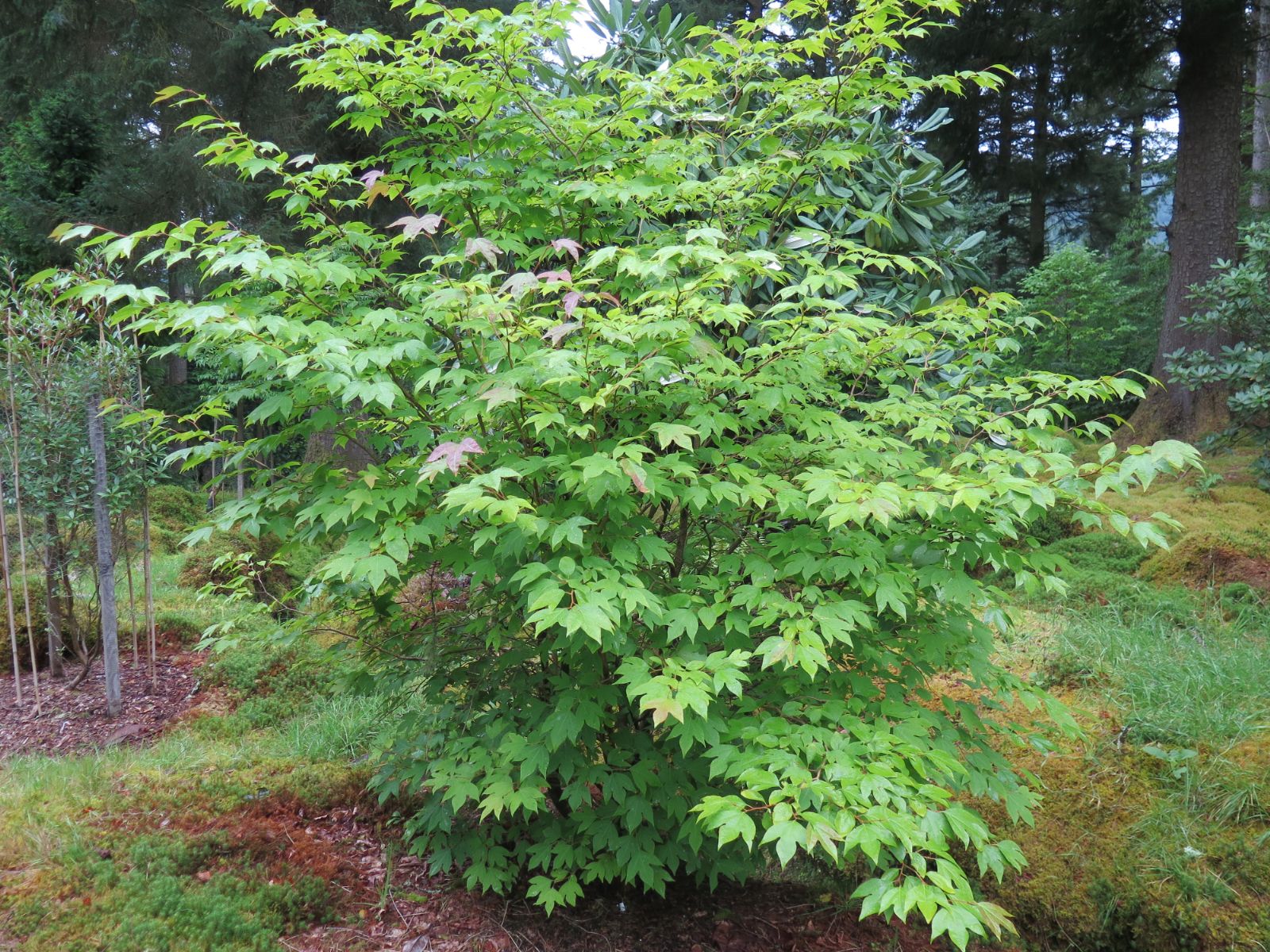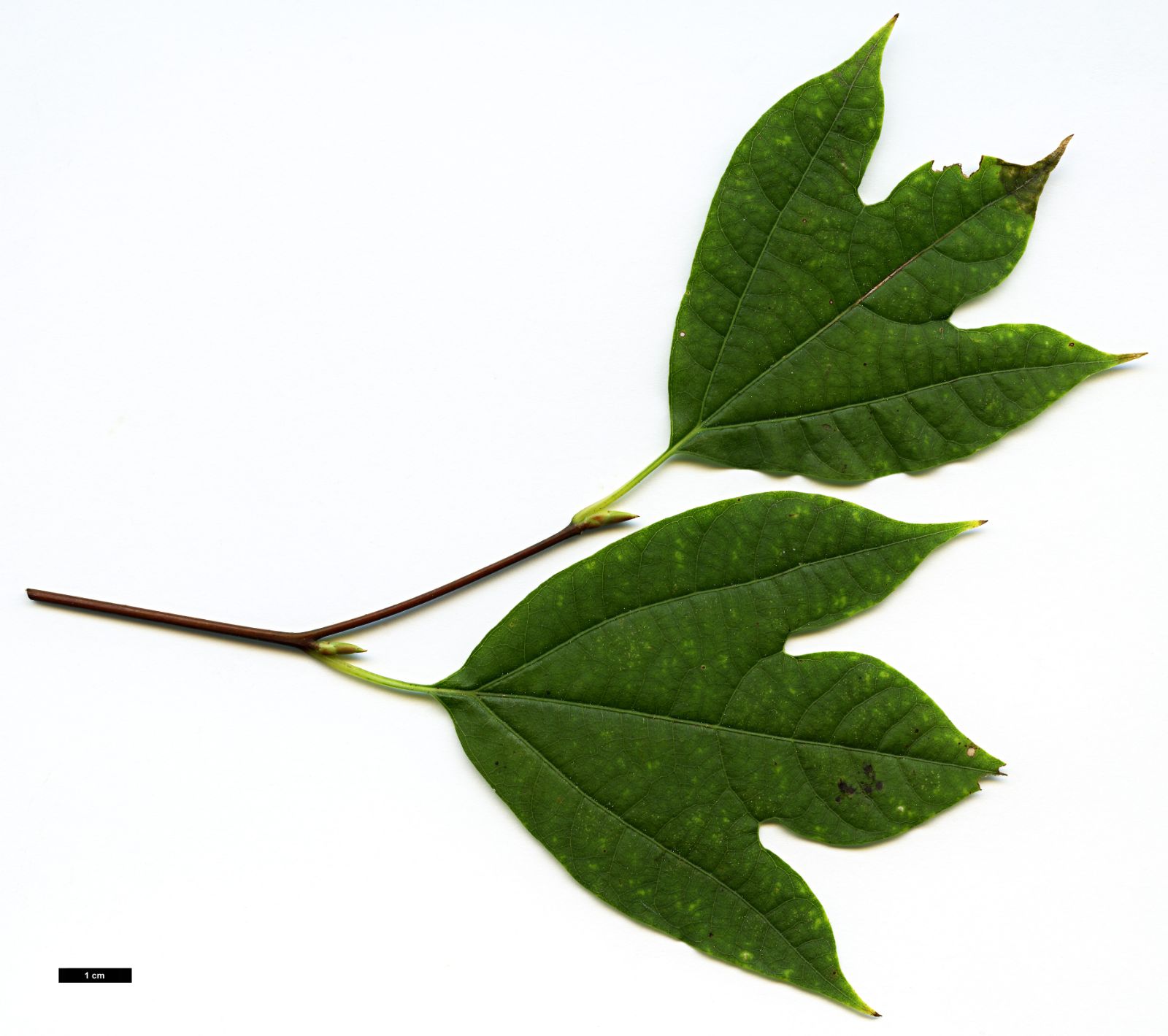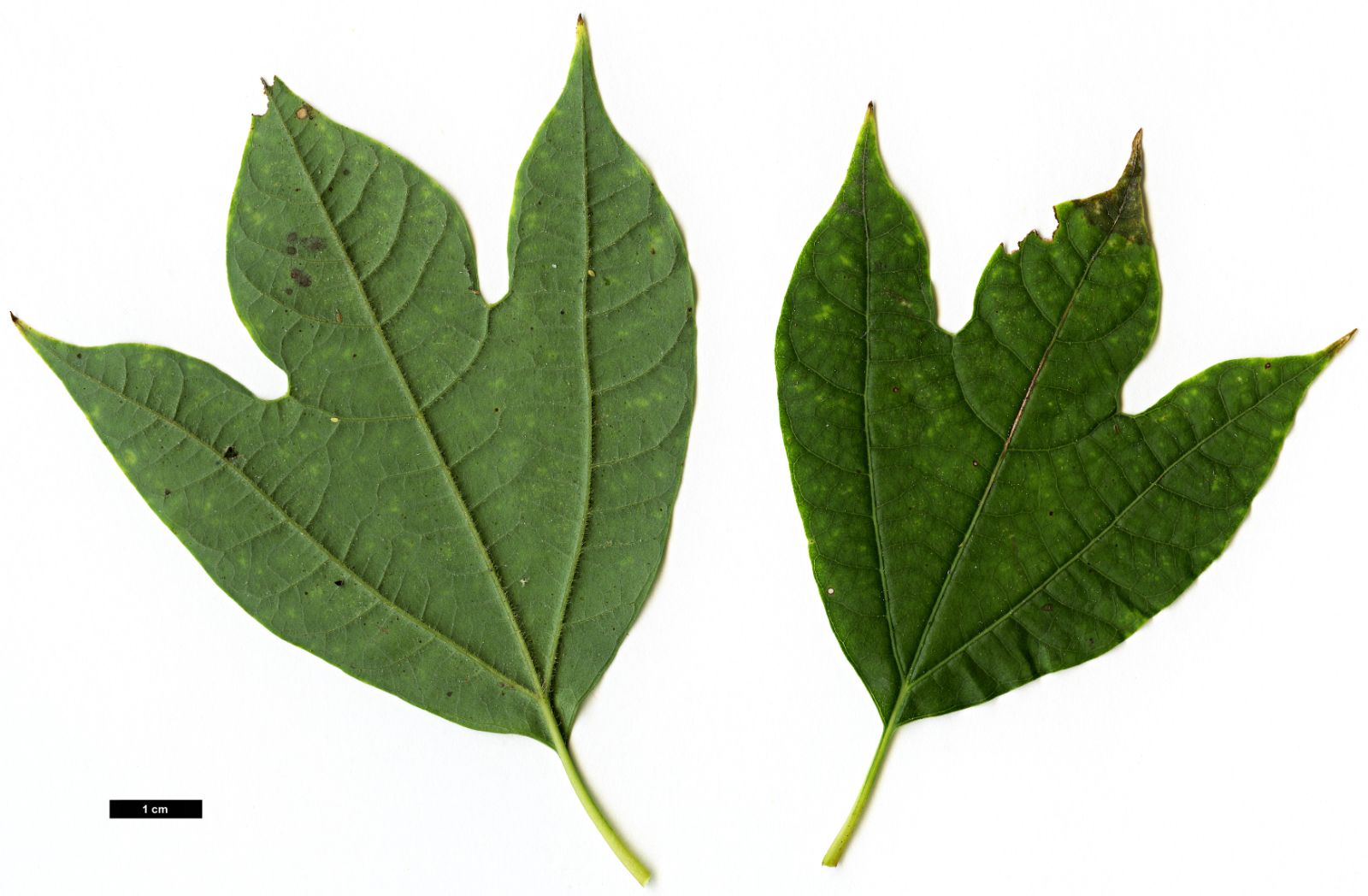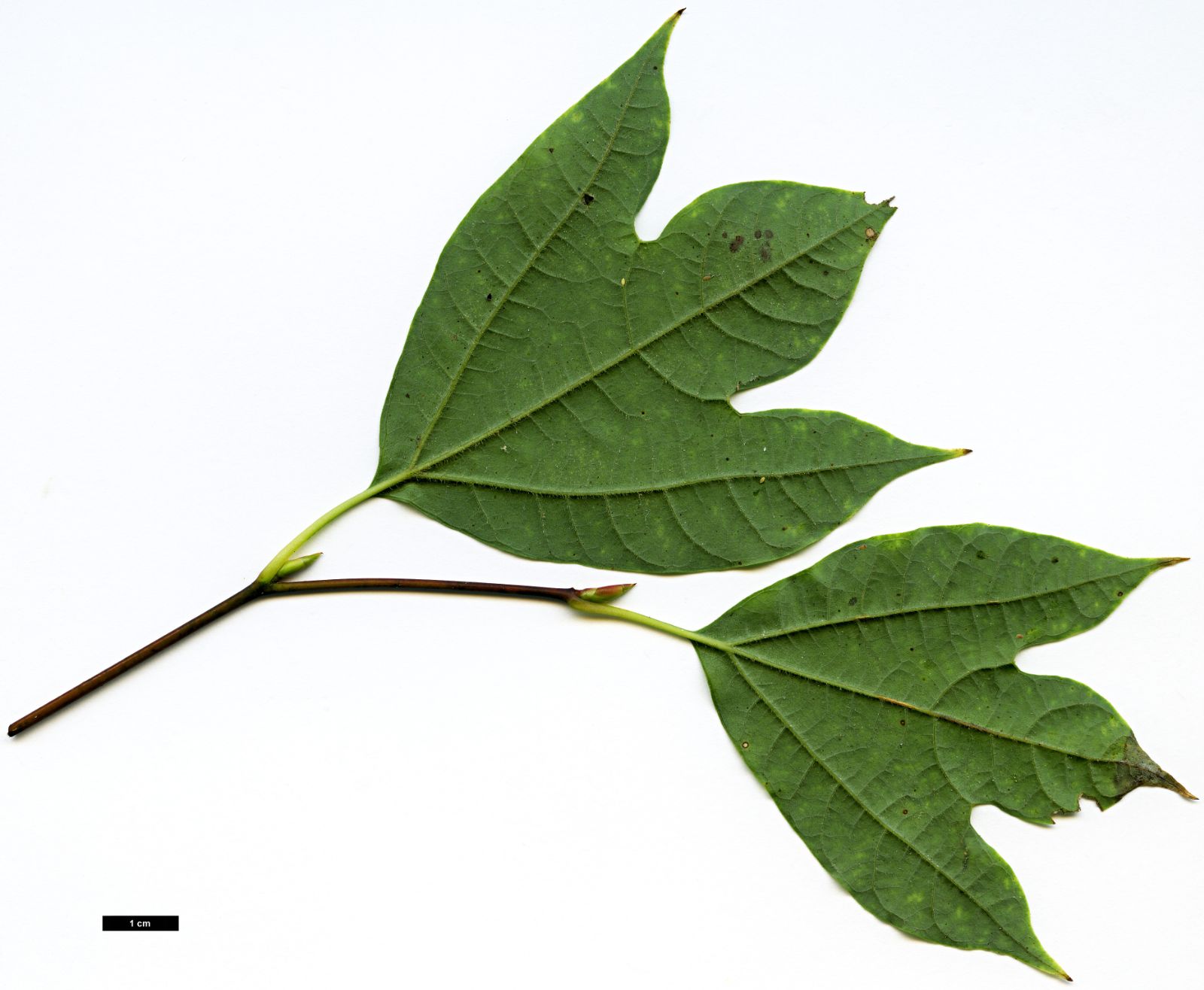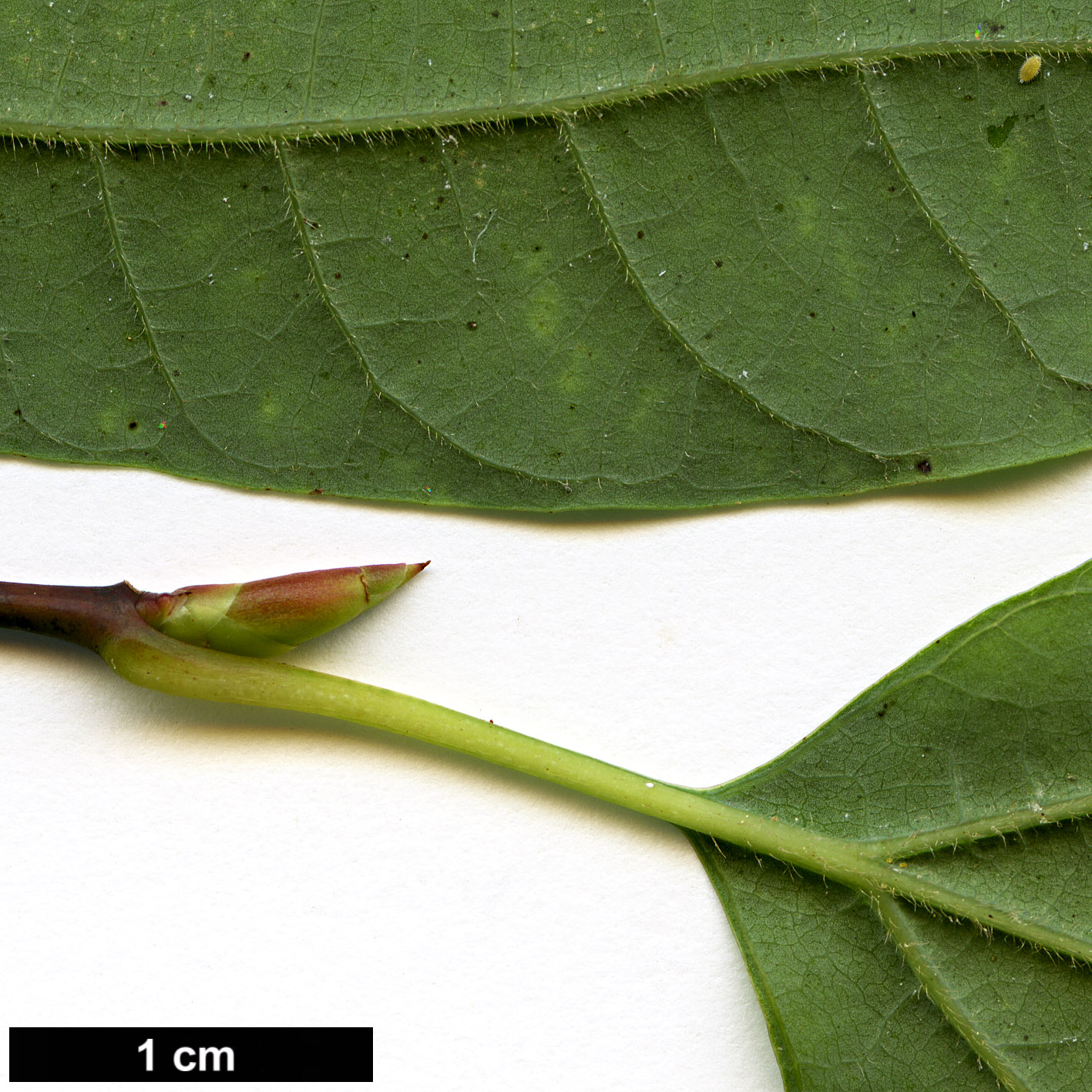Lindera triloba
Sponsor
Kindly sponsored by
a member of the International Dendrology Society
Credits
Julian Sutton (2023)
Recommended citation
Sutton, J. (2023), 'Lindera triloba' from the website Trees and Shrubs Online (treesandshrubsonline.
Genus
Synonyms
- Benzoin trilobum Siebold & Zucc.
- Parabenzoin trilobum (Siebold & Zucc.) Nakai
Other taxa in genus
- Lindera aggregata
- Lindera akoensis
- Lindera angustifolia
- Lindera assamica
- Lindera benzoin
- Lindera chienii
- Lindera communis
- Lindera erythrocarpa
- Lindera floribunda
- Lindera fragrans
- Lindera glauca
- Lindera megaphylla
- Lindera melissifolia
- Lindera metcalfiana
- Lindera neesiana
- Lindera obtusiloba
- Lindera praecox
- Lindera pulcherrima
- Lindera reflexa
- Lindera rubronervia
- Lindera sericea
- Lindera tonkinensis
- Lindera umbellata
Deciduous shrub. Leaves trinerved; blade membranous, broadly deltoid-obovate, usually 3-lobed, 8–12 cm long, lobed leaves 7–10 cm wide, unlobed leaves 3–5 cm wide, glabrous apart from spreading hairs on the veins beneath, lower surface glaucescent; base cuneate; apex acuminate; petiole 1–2 cm. Umbels on short peduncles, each with 4 involucral bracts. Flowers with 6 tepals; male flowers with 9 fertile stamens, females with reduced staminodes. Fruit globose, 1.2 cm across. (Ohwi 1965).
Distribution Japan C & W Honshu, Shikoku, Kyushu
Habitat Forest understorey.
USDA Hardiness Zone 8-9
RHS Hardiness Rating H4
Conservation status Not evaluated (NE)
This lovely deciduous shrub has probably been neglected by gardeners through unnecessary confusion with Lindera obtusiloba, an equally fine but quite different plant. The dense umbels of yellowish flowers on bare branchlets in spring are absolutely typical of linderas, but the elegant form of the 3-lobed leaves – fresh green through the summer, rich yellow or sometimes orange in autumn – inspires devotion in some gardeners (Probert 2018), this author included. It is best grown in sun or part shade, in a freely drained acidic to neutral soil with some moisture retention (Crûg Farm Plants 2023). As a wild plant in central Honshu, it appears less shade tolerant than L. praecox, and tends towards drier sites away from valley bottoms, although the two can grow together (Nakagawa et al. 2015); it is also later flowering (Tokumoto et al. 2019). Its yellow autumn colour is conspicuous in the wild as well as in gardens, especially when contrasting with the purple of Disanthus cercidifolius (R. Lancaster pers. comm. 2023).
With its trinerved, usually 3-lobed, deciduous leaves, Lindera triloba could only be confused with L. obtusiloba (while the related Sassafras tzumu can have a very similar leaf shape, other plant features make confusion unlikely). L. triloba is readily distinguished from L. obtusiloba by its glaucescent leaf undersurface, and acuminate tips to the lobes (Ohwi 1965). Lobing is usually deeper in L. triloba, and the central lobe is often narrowed a little towards its base (Lancaster & Rix 2019). Its fruits are larger, and split irregularly into 5 or 6 segments to reveal the seed, a feature which once placed it in the segregate genus Parabenzoin (Ohwi 1965). The two species have a similar range in Japan, but the variable L. obtusiloba extends much further, into Korea, China, and through Myanmar to the Himalaya.
Lindera triloba was first described scientifically (as Benzoin trilobum) by Siebold & Zuccarini (1846). Their Latin description unambiguously relates to this plant, mentioning the 3-lobed leaves with acuminate apices, and its habitat in the mountains of Japan. (Blume 1851) included the species in his wide concept of Lindera (more or less as used today), accepting L. obtusiloba as a distinct species. There is no taxonomic confusion between the two. In gardens, however, L. triloba was long confused with L. obtusiloba, at least in Britain. Some of this may have been due to early Western collectors in China being uncertain as to which of the two species, as described from Japan, best matched the plants they were seeing, although Ernest Wilson felt the material he collected in Sichuan and Hubei best approximated to L. obtusiloba, and named it as such (Sargent 1916). Cut material of L. obtusiloba, labelled as L. triloba, was exhibited at an RHS show in 1952 by the Savill Garden; it gained an Award of Merit (for L. triloba) for its yellow autumn colour (Bean 1981; R. Lancaster pers. comm. 2023). It was probably this same stock which Hillier Nurseries distributed as L. triloba for some years, cementing the error (Lancaster & Rix 2019; R. Lancaster pers. comm. 2023).
Numerous introductions of genuine L. triloba have been made since 1990, at least one of which has provided a secure commercial propagating stock. Seed collected by Japanese nurseryman Seijo Yamaguchi (Gifu Prefecture, Honshu, 1991) was distributed by Roy Lancaster under L 1960. A male plant from this has grown at RHS Garden Rosemoor since the 1990s (see images below). Further confusion has been caused by the similarity of these details to another Yamaguchi collection (Honshu 1998, distributed under L 2166) which was initially labelled L. triloba but proved to be L. obtusiloba (R. Lancaster pers. comm. 2023). Crûg Farm Plants have made several seed collections, notably BSWJ 5570 (Kii Peninsula, S Honshu, 1998). A mother plant at Crûg Farm from this collection proved to be hermaphrodite, and is an ongoing source of seed, immensely valuable in a plant which is so hard to propagate vegetatively (Crûg Farm Plants 2023). Other Crûg introductions include BSWJ 11121, 11422 (Shikoku 2006) & 11466 (Kyushu 2006); despite groups of seedlings from these later collections being planted together at Crûg Farm, they have not yet produced seed, emphasizing the value of the hermaphrodite (B. Wynn-Jones pers. comm. 2023). Plants at RBG Ediburgh and its satellite gardens, especially Benmore, derive from a series of quite recent collections: BBJMT 281 (C Honshu 2005), ESJE 41 (Kyushu 2006), BCJMM 307 (Honshu 2007), EIJKE 74 (S Honshu 2013) and EIJKE 134 (Shikoku 2013).
In Belgium, L. triloba is recorded at Arboretum Kalmthout and Arboretum Wespelaar (Plantcol 2023), while in North America it is grown at UBC Botanical Garden, Vancouver, and at the Hoyt Arboretum, Portland OR (University of British Columbia 2023; Hoyt Arboretum 2023).
After years of neglect there is now no reason not to include this fine species in new plantings, especially for autumn colour, although this is a plant ‘which looks good at absolutely any time of year’ (Blackhall-Miles 2014).

